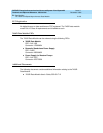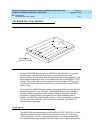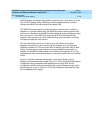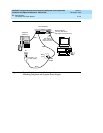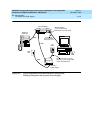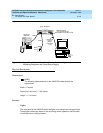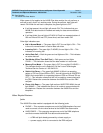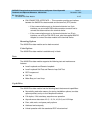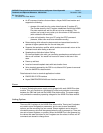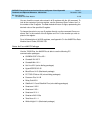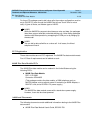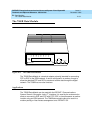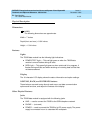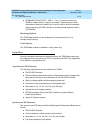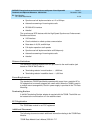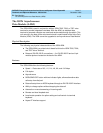
DEFINITYEnterpriseCommunicationsServerandSystem75andSystem85
Terminals and Adjuncts Reference
555-015-201
Issue 11
December 1999
Data Modules
21-28The 8400B Plus Data Module
21
■ An AT command interface that emulates a Hayes 2400 Smartmodem and
supports the following:
— storage of the wait time for carrier detect interval (S-register S7)
The number stored in the S7 register establishes the time the 8400B
Plus data module will wait for call set up to be completed. This
number can be set for any value up to a maximum of 255 seconds
(with a default to 60 seconds).
— voice call origination from your PC using the ATDP command
(however, these calls must be terminated manually)
■ Data metering which allows the data module and associated terminal to
operate at higher speeds than the far-end data point
■ Supports the semicolon modifier which enables an automatic return to the
command mode after dialing a data call
■ Speakerphone Activation before Dialing
For terminal dialed voice calls, you can delay speakerphone activation until
after a call is dialed. You would not hear touch tones or dial tone in this
case.
■ Power-up self-test
■ Local and remote loopback tests with test duration timer
■ Voice terminal powered by the PBX is not affected if AC power is removed
from the 8400B Plus data module
Data features for host or terminal applications include:
■ EIA/RS-232-D DCE interface
■ Hayes SMARTMODEM 2400 user interface emulation
Power
A Lucent Technologies power supply unit is shipped with each 8400B Plus data
module. This unit connects to a grounded AC outlet, and provides a connection
between the PBX wall jack and the 8400B Plus data module. The power supply
unit provides the necessary operating voltages for the 8400B Plus data module.
Setting Options
There are 28 S-registers in the 8400B Plus data module. Twenty-two S-registers
are used to store configuration parameters; one is used to store installation
options, and the remaining five are unused. Eleven registers can be stored in
nonvolatile memory, which will be restored when the unit is powered up. There are
two sets of stored registers, or profiles. When the 8400B Plus is first powered on,
the values that were last stored in the S-registers are the values in effect until AT
commands are issued to change them.



